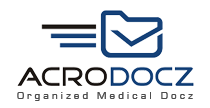Personal Injury cases revolve around the medical records of the patient. Retrieving a full and complete copy of a client’s medical records is a burdensome and time-consuming process. However, it is vital to obtain a full and complete copy of the medical records. Missing one small part of the records could result in losing a case. In this article, we will take you through the steps to ensure that all of the records necessary to pursue a claim or civil action are assembled.
Retrieving medical records must first start with obtaining a HIPAA compliant form signed by the client. Without a HIPAA-compliant authorization, the providers will not release the records. Before retrieving the records attorneys need to understand which records or portions of records will have the information that is vital to proving the case. In turn, the attorney must ensure that all of the relevant records are retrieved.
The following records should be retrieved in most cases.
- Records of diagnosis and prognosis of the Injury – Include the provider’s notes on the condition of the patient and the outcome of the treatment post-injury. This will give a complete understanding on why a certain treatment was performed and the importance of choosing that treatment instead of an alternative course of treatment.
- Records of Emergency Room visit (if any) – There is a separate record created if the patient is treated in an emergency room. It is important to obtain this record as it is entirely different from the regular hospital records.
- Initial medical procedures notes – These records offer clarity on the connection between each service offered or procedures performed by the provider. It also includes fine points on how the services were performed.
- Provider’s findings for the cause of injury– Notes of a provider may identify and set forth the direct cause of injury or condition.
- Preexisting conditions and medical records related to them – Pre-existing conditions and symptoms of the worsening post-injury is typically noted by the provider.
- Provider’s prescription- Medications that are given to the patient due to the injury are documented.
- Follow-up treatment plan– Documents containing details of post-discharge follow-up with the doctor or another provider.
- Testing reports, MRI and CT scans, and x-rays.
- Itemized bills.
Retrieving and obtaining a full and complete copy of all medical records related to an injury is vital, like a missed or overlooked record may have information that strongly or conclusively supports your client’s claim or case.
Therefore, upon receiving records, a review has to be completed to determine whether the records contain a reference to any treatment or healthcare provider not contained in the records obtained and if so, those records must be retrieved.
Similarly, CPT codes (numbers assigned to each service and task a provider completes) contained in medical bills should be reviewed and summarized to ensure that records related to each service have been obtained.
In a personal injury claim that is submitted to an insurance carrier, a copy of the medical records and bills that the insurance carrier retrieved should be obtained and compared with the records that were obtained by your firm. If the carrier has different or more records, those records should be retrieved.
If you are missing even a small part of your client’s medical records it could result in overlooking an important aspect of the claim. Therefore, it is vital to take all the steps necessary to ensure that you have obtained a full and complete copy of the records.
AcroDocz assists law firms and attorneys in retrieving all necessary medical records promptly. To learn more about our medical records retrieval services, please fill the form below and we will get in touch with you.





